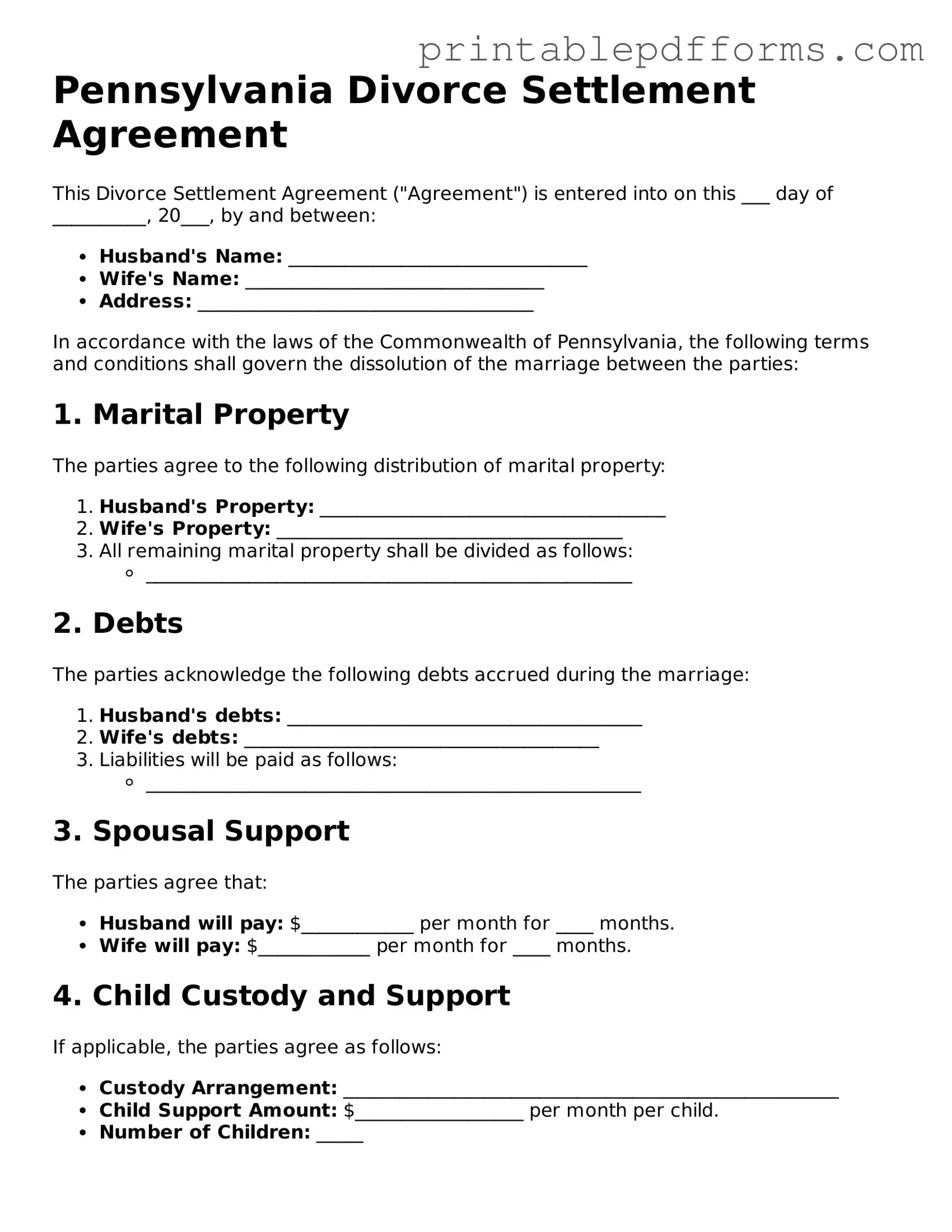Pennsylvania Divorce Settlement Agreement
This Divorce Settlement Agreement ("Agreement") is entered into on this ___ day of __________, 20___, by and between:
- Husband's Name: ________________________________
- Wife's Name: ________________________________
- Address: ____________________________________
In accordance with the laws of the Commonwealth of Pennsylvania, the following terms and conditions shall govern the dissolution of the marriage between the parties:
1. Marital Property
The parties agree to the following distribution of marital property:
- Husband's Property: _____________________________________
- Wife's Property: _____________________________________
- All remaining marital property shall be divided as follows:
- ____________________________________________________
2. Debts
The parties acknowledge the following debts accrued during the marriage:
- Husband's debts: ______________________________________
- Wife's debts: ______________________________________
- Liabilities will be paid as follows:
- _____________________________________________________
3. Spousal Support
The parties agree that:
- Husband will pay: $____________ per month for ____ months.
- Wife will pay: $____________ per month for ____ months.
4. Child Custody and Support
If applicable, the parties agree as follows:
- Custody Arrangement: _____________________________________________________
- Child Support Amount: $__________________ per month per child.
- Number of Children: _____
5. Miscellaneous
The parties further agree on the following terms:
- _____________________________
- _____________________________
This Agreement represents the entirety of the understanding between the parties. Both parties declare that they entered into this Agreement voluntarily and with full knowledge of its implications.
Signatures
IN WITNESS WHEREOF, the parties have executed this Agreement as of the date first above written.
Husband's Signature: _____________________________ Date: ____________
Wife's Signature: ______________________________ Date: ____________
Witnessed by:
Witness Name: ________________________________
Witness Signature: ____________________________ Date: ____________
